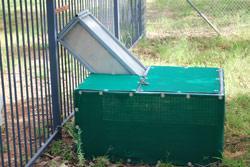Western Australians are being urged to maintain the fight against cane toads, following confirmation that the invasive species has now crossed the WA border.
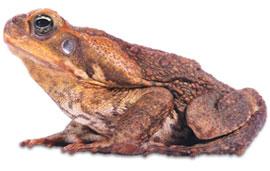
Cane toads (Bufo marinus) were introduced to Queensland decades ago to try to stop beetle damage in sugar cane crops. Instead, they became a major pest themselves and, ever since, cane toads have been steadily moving across northern Australia.
To help fight this invasion, the WA Government is working closely with community groups to slow their progress, while research to find a biological control for the pest continues.
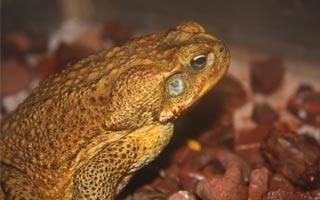
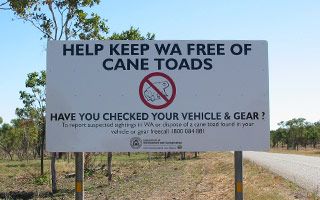
Identification
Cane toad tadpoles are jet black all over and have a totally transparent tail without any pigment, dots stripes or other markings. Cane toad tadpoles grow to an average of 3cm and commonly school in large numbers in shallow water. They rarely come to the surface of the water to breath.
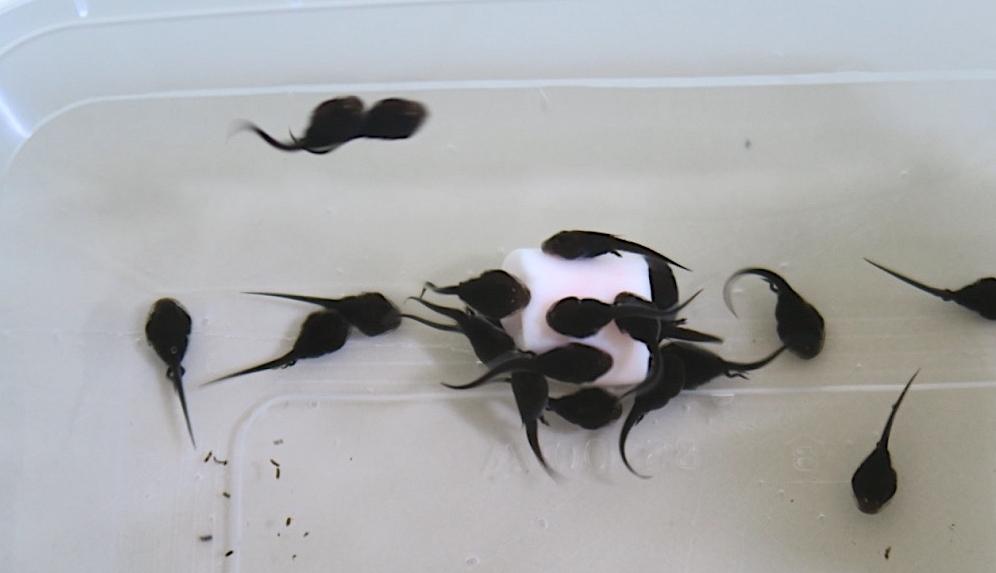
What does a cane toad look like?
Adult cane toads are usually very large – around 10 to 15 cm long (or 4 to 5 inches) with rough and extremely warty skin. If you find one over 4 cm long, you should be able to identify it from this picture.
They range from dull brown, yellowish to blackish on top and mottled brown underneath. Cane toads have large eardrums just below/behind the eyes, and large glands behind the head which exudes a white poisonous substance.
Smaller toads can easily be confused with native frogs and up to two-thirds of suspected toads turn out to be harmless frogs. If you are unsure, please take the animal to your local DEC office or email a digital photograph to DEC officers so it can be correctly identified.
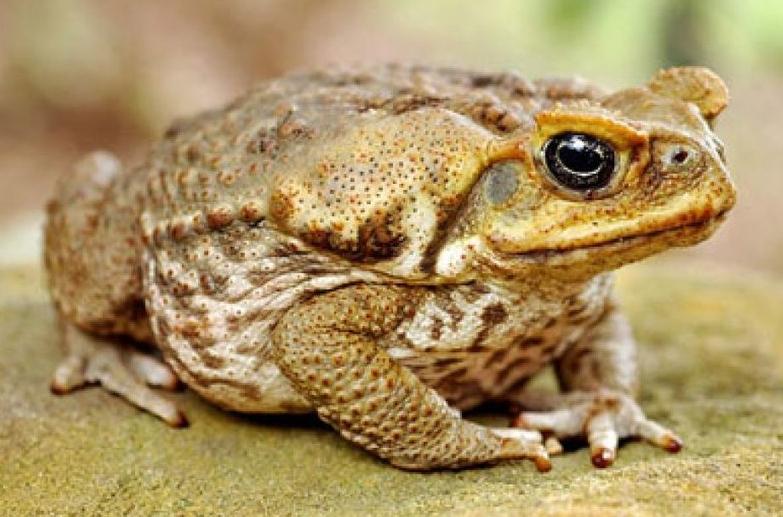
Behavioural characteristics
Like many native frogs, adult cane toads are most active at night in open areas such as roads and lawns. Sometimes they congregate beneath street lamps and other lights to catch insects.
On land, toads walk and bound short distances but do not leap and are not capable of climbing smooth surfaces like some native frogs. They also typically sit more upright than native frogs.
If a cane toad is found outside the known distribution, please contact either your local DEC office, as soon as possible. A trained officer can then identify the animal and appropriately dispose of it, if it is a cane toad.
What to do
Removing cane toads
- Take pets away from the vicinity and make sure children are supervised.
- Wear rubber or gardening gloves and safety glasses where possible and have a plastic bag or a sealed container (with air holes and a small amount of water) ready to contain the cane toad.
- Carefully pick up the cane toad by the back legs or use a broom or similar to ‘sweep’ the toad into a container.
- Sterilise your hands and other items that have come into contact with the toad using antiseptic.
- People can then transport suspected cane toads in the plastic bags or containers (with air holes) to their local DEC office for identification. Alternatively, send a digital photograph to a DEC office via email, so it can be correctly identified.
Warning!!!
Be careful when handling cane toads: toxin is produced in their shoulder glands and is present in the skin of the back. If the toxin gets in your eyes, nose or mouth seek medical attention.
How do I report sightings?
WA residents or visitors who suspect they may have found a cane toad should isolate it and report the sighting immediately by phoning Freecall 1800 084 881. Make a note of the date, time and location where you saw the toad and if you can, take a photo of the suspect.
Additional information on cane toad poisoning is available from the 24 hour Poisons Information Line on 13 11 26.
What information is required from me when I report sightings?
- Contact number for person reporting sighting: More information may be required for staff to follow up the sighting.
- Address and description of location, date and time of day where animal found or seen. Include habitat (grass, window ledge, height above ground, dog bowl, in pile of sand, in pot plant, on side of the road etc). The date is important, especially if it has been a while since the sighting was made.
- Reasons/circumstances why it may be a cane toad. For example recent camping or other visits to toad-infested areas, import of goods from such areas or sightings of large frogs.
- How identified: Was an identification key used? What features indicated that it was a cane toad?
- Number of toads: Was it an individual or were there a number of them?
- Age: Was it a juvenile/adult cane toad, spawn or tadpoles?
- Alive or dead: It may have been a road kill.
Is a toad hiding in your vehicle?
Cane toads are notorious for hitchhiking long distances, hidden in camping gear, clothing, caravans, farm produce, and any other spot they can find. Before you cross the WA border from toad-affected areas, be sure to check your vehicle for stowaways.
Have you found a friendly native frog?
Many of our native frogs can easily be mistaken for cane toads. One reason is because many of these frogs burrow and only emerge after rain, giving the impression that they have suddenly ‘arrived’ in an area.
Below are some examples of our native frogs to help you identify if the amphibian you have found is a friend or foe.
Native Kimberley frogs commonly mistaken for cane toads:
Giant Frog (Cyclorana australis)
Identifying features:
- Large, ground-dwelling frog
- 7 to 10 cm long
- Ranges from pale grey to brown above, but occasionally marked with green
- Has folds of skin along the back and flanks
- Usually has a dark streak that runs from the snout, through the eye to the ear
- Nocturnal
- Burrows, usually seen above ground after rain
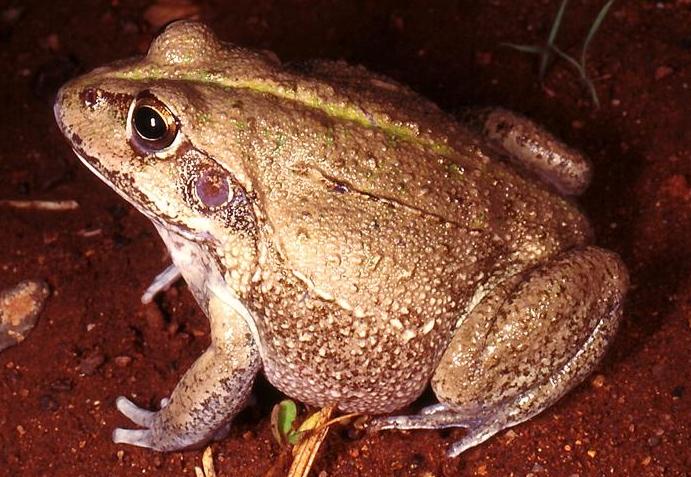
Marbled frog (Limnodynastes convexiusculus)
Identifying features:
- Wide bodied frog which is a moderate-size (up to 6cm)
- The background colouration is olive with small rectangular patches of darker green
- Skin of the dark patches is often raised
- Fingers and toes are unwebbed
- There is a prominent pale gland above the lip at the angle of the mouth
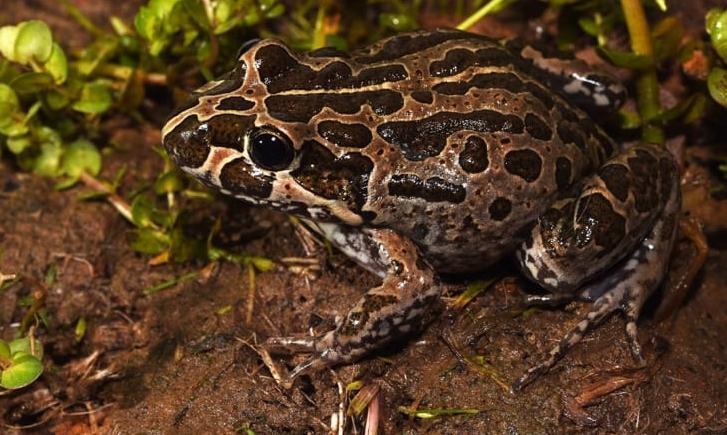
Long-footed frog (Cyclorana longipes)
Identifying features:
- Medium sized (5-6cm)
- Smooth skin with striking large dark brown patches on a pale grey background
- Often with a narrow pale yellow stripe down the back
- Limbs are short to moderately long with slender fingers
- Its call is a single long harsh note
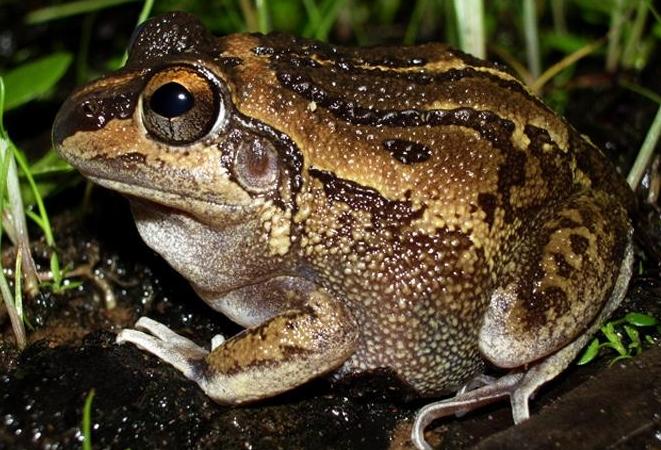
Rockhole frog (Litoria meiriana)
Identifying features:
- Small and active frog with long limbs
- Small (2cm) and active frog with long limbs
- Fingers are short and unwebbed
- The toes are long and fully webbed
- There are often small spots on the thighs with a small white bar behind each eye
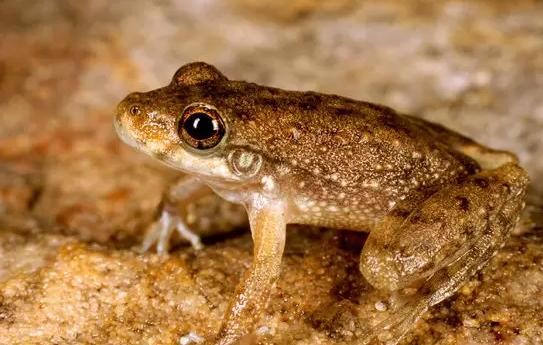
Bumpy rocket frog (Litoria inermis)
Identifying features:
- Medium sized (5-6cm)
- Smooth skin with striking large dark brown patches on a pale grey background
- Often with a narrow pale yellow stripe down the back
- Limbs are short to moderately long with slender fingers
- Its call is a single long harsh note
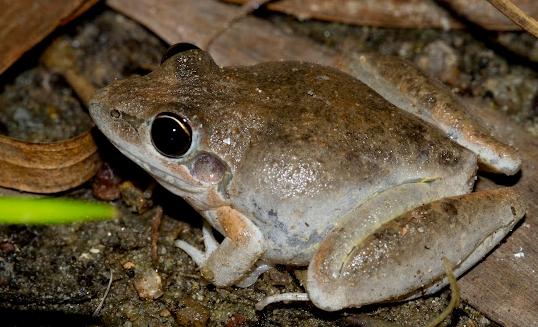
Ornate burrowing frog (Platyplectrum ornatum)
Identifying features:
- Medium sized round frog ( 4.5cm) with short legs
- Broad head with large eyes that stick above its head
- The eardrum is not distinct
- Pale brown colour with an elaborate series of ‘ornate’ blotches often edged in black
- Some have a wide central stripe from the snout and extending along the back.
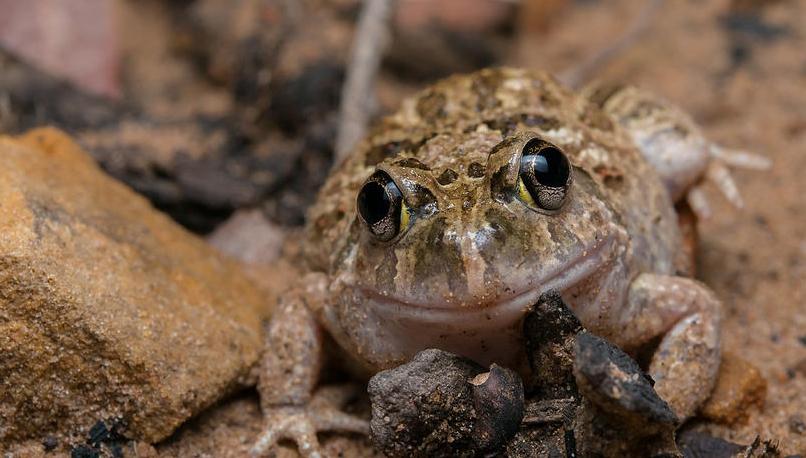
Report a WA cane toad sighting
Everyone needs to be on the lookout for cane toads. Information you provide will help the Department of Environment and Conservation (DEC) document and manage the arrival of cane toads to Western Australia. Please fill out this form online and submit it
How to dispose of the reed toad safely
As the reed toad moves into Western Australia, recycling points have been set up so that Kimberley residents can safely dispose of live toads.
As up to 70% of cane toad sightings turn out to be native frogs, locals are encouraged to take the animals to a collection point for identification.
The toads can be placed in a chute that leads to a specially designed cage equipped with solar-powered lights to attract food, a shade cloth and water.
The cane toads will be humanely euthanised and disposed of by a designated officer at a designated landfill site, while native frogs will be released into suitable habitat around the Kimberley.
The collection points and toad disposal pit are part of a range of new measures the state government has introduced to help the community cope with invasive species.
